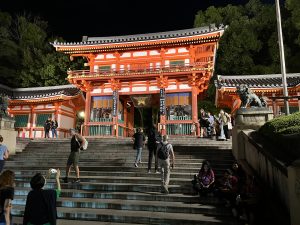Kyoto
We check out from Daiwa Roynet Hotel Nishi Shinjuku then took a taxi to Tokyo Station where we borded a Buttet Train to Kyoto.
Arrive in Kyoto at 10:51 and walked to our hotel at the DoubleTree by Hilton Kyoto Station

We took a taxi to meet at Ben’s Cookies at 6 pm and headed to the Kyoto Gion Geisha District for the “The Stories of Geisha” tour.
Statue of Izumo-no-Okuni The Izumono Okuni Statue in Kyoto is a bronze sculpture dedicated to Okuni, a legendary figure considered the founder of Kabuki theater. Located in the Gion district, this statue pays homage to Okuni’s pioneering contributions to Japanese performing arts. Okuni is believed to have originated Kabuki in the early 17th century, and her statue serves as a symbol of the art form’s rich history in Kyoto.
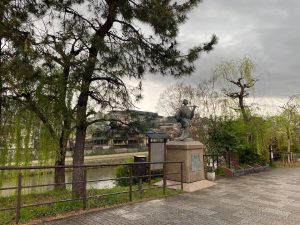
Minamiza Theater is a historic theater in Kyoto, Japan, renowned for hosting traditional Kabuki performances. Kabuki is a unique Japanese theater art known for elaborate costumes and dramatic storytelling, often featuring historical themes.
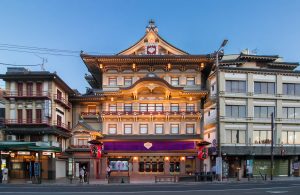
Tatsumi Bridge Gion Shinbashi is a charming neighborhood in Kyoto, Japan, known for its picturesque streets, traditional tea houses, and geisha culture. One of its notable features is the Tatsumi Bridge, a historic bridge that spans the Shirakawa Canal. Tatsumi Bridge provides a scenic view of the canal and the surrounding wooden machiya houses, creating a serene atmosphere that transports visitors to the old-world charm of Kyoto. Gion Shinbashi and Tatsumi Bridge offer a glimpse into the timeless beauty and cultural heritage of Kyoto.
![]()
Hanamikoji Street Hanami Koji Street is a picturesque and historic thoroughfare located in the Gion district of Kyoto, Japan. This iconic street is renowned for its traditional machiya houses, upscale restaurants, teahouses, and a glimpse into the world of geisha and maiko culture. Wandering along Hanami Koji, we see the ambiance of old Japan with its well-preserved wooden buildings and lantern-lit evenings.
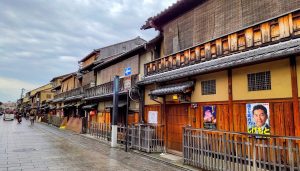
Gion Corner is a cultural center and performance venue located in the historic Gion district of Kyoto, Japan. It offers visitors a condensed experience of traditional Japanese arts and culture, showcasing a variety of art forms such as tea ceremony, flower arrangement (ikebana), traditional music (koto and shamisen), and the enchanting world of geisha and maiko. The performances at Gion Corner provide an opportunity to witness and appreciate the elegance and beauty of Japanese traditions.
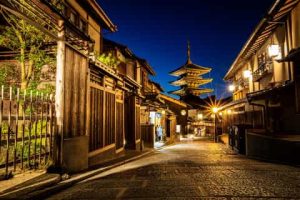
Yasaka Shrine Yasaka Shrine, also known as Yasaka Jinja or Gion Shrine, is a historic Shinto shrine located in the Gion district of Kyoto, Japan. It is one of the most prominent and visited shrines in the city, known for its vibrant festivals and cultural significance. Founded over a thousand years ago, Yasaka Shrine is dedicated to the Shinto deity Susanoo-no-Mikoto and later became associated with the protective deity of Gion, especially during the Gion Matsuri festival, one of Japan’s most famous annual festivals. The shrine’s iconic vermilion gates, lanterns, and beautiful architecture make it a popular attraction and a symbol of Kyoto’s traditional charm.
